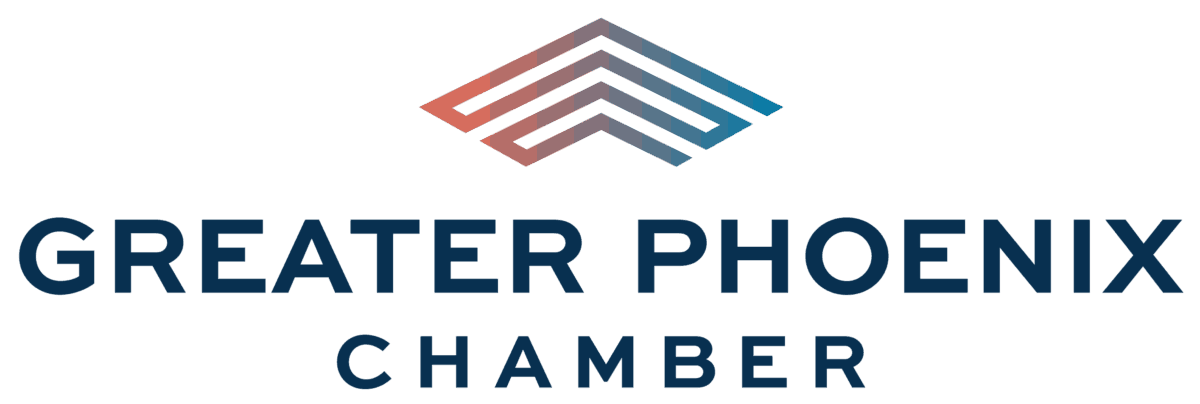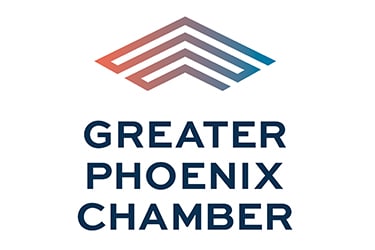“For all the struggles in 2020, it was the tale of two economies, and 2021 will start with more of the same.” That’s the opening view of the year ahead by Phoenix Community and Economic Development Director Christine Mackay. “We’re seeing businesses exhausting all avenues to stay alive, and many are adapting to new ways of doing business.”
“Our retail, hospitality and restaurants faced a devastating pandemic year,” said Mackay. “Yet our construction, downtown development and manufacturing economies saw tremendous gains.”
The strengths in the Phoenix economy are continuing to hire. CBRE and others say that Phoenix is one of the best job markets in the U.S. consistently ranking in the top five on multiple reports covering bioscience healthcare, manufacturing and technology hiring.
Near-shoring continues in 2021, Mackay believes, as more manufacturers look for North American sites.
The most prominent of these is the Taiwan Semiconductor Manufacturing Corporation chip manufacturing plant that will be build at Carefree Highway and Interstate 17 in north Phoenix. The $12 billion foreign direct investment is the largest ever in Arizona, but to put it in perspective, in 2019, the Census Bureau reports that the total FDI across the entire U.S. was $12.8 billion.
“We saw a huge increase in manufacturing expansion and growth, with Deer Valley being one of the hottest markets,” she said. “There is much more to come in the new year.”
Manufacturing development landed across the city. This year, the first industrial projects in the Loop 202 South Mountain Freeway corridor will break ground. Mackay said 2021 will also mean redeveloping aging and obsolete malls adapting the prime properties to the new economy.
Arizona was third in the nation in the number of new residents moving to the state in 2020, according to estimates from the U.S. Census Bureau. In past years, two of three new Arizona residents moved to the Valley, and almost half picked Phoenix as their new home. More people moved into Arizona in 2020 than in 2019. The three-year trend shows upward population numbers. Phoenix is likely to see more new residents in 2020 than any other U.S. city for the fifth consecutive year.
Those new residents are driving housing demand; and the construction industry is responding. Although ranking behind to Dallas, the fifth-largest U.S. metro in 2020 apartment starts, Greater Phoenix saw apartment starts at a pace nearly 1.5 times faster than the Texas metropolis.
Mackay said that 2021 would continue with record numbers of cranes in the Downtown skyline. “These are projects already in the pipeline,” she said. “They will keep us moving towards the urban density we want to see in Downtown.”
The decade ended in 2020 with 20 cranes over mid- and high-rise construction sites predominately in Downtown and Midtown. Rider Levett Bucknall’s Crane Index ranked Phoenix seventh in numbers of cranes in the air in the U.S. and cited Phoenix as one of only three of the top 10 U.S. cities with an increase in its crane count in the third quarter of 2020 compared to a year earlier.
“The value of our construction activity was up 89 percent through mid-2020, compared to the first six months of 2019,” said Mackay. “The ConstructionDive website said Phoenix was the only top 20 U.S. city with an increase in construction during the pandemic compared to the prior year.
Many have said that the office market will face significant changes with increased teleworking once the pandemic ends.
“I don’t see that,” said Mackay. “We have only had one company tell us that they plan to maintain teleworking. Companies say teleworking has impacted productivity, and they look forward to bringing their teams together again in an office environment.”
New office corridors are likely to start sprouting buildings in 2021, predicts Mackay. She points to Desert Ridge and Paradise Ridge on both sides of Loop 101 between Scottsdale Road and S.R. 51 as an area of interest. TSMC put a spotlight on the Metrocenter area by leasing a 40,000-square-foot office to oversee facility construction.
Job prospects look good as well in manufacturing, technology and the sciences. Mackay says that companies are looking to expand, and hiring in these sectors only nominally slowed during the pandemic. Phoenix is rolling out a training partnership with the city-based Maricopa Community Colleges to develop a workforce for these career-track jobs.
Mackay expects the hardest-hit sectors will begin recovery later in 2021.
“There were many people out shopping (in December),” she said. “Not as many as you might normally see, but despite the pandemic, people seem to want to see and touch the gifts they plan to buy.”
What was seen on the streets translated to the December 2020 Employment Report from the Arizona Office of Economic Opportunity. The Greater Phoenix unemployment rate dropped from 7.4 percent in November to 6.9 percent in December. The workforce hit 2.2 million for December compared to 2.0 million at the beginning of the pandemic in April. While still shy of last December’s 2.25 million workers, Phoenix has regained all but 50,000 of the jobs lost in the pandemic shelter-in-place order nine months ago.
Even the boost in online sales had benefits in Phoenix. A leading logistic center for the western U.S. and Mexico, retail hiring in e-commerce was robust. A new 600,000-square-foot fulfillment center will be announced in early February. NOTE: IF THIS PUBLISHES AFTER FEB 2, YOU CAN USE THIS LINE: The RealReal announced the opening of a 600,000-square-foot fultillment center. It plans to hire 400 this year and more ethan 1,500 over next five years.
Kroger, the parent of Fry’s Food, just announced the most technology advanced eCommerce facility in Phoenix. The $79-million project will be a grocery store without customers. It will be the supermarket where online delivery orders are assembled by robots.
“We saw the trend of the next five years occur in five months,” said Mackay. “As people get used to grocery shopping online, they are not likely going back to in-person shopping.”
Mackay said that business travel is returning, and some hotels reported occupancies in the 40 percent range. She projected that it wouldn’t be until 2022 that we see a full recovery in tourism.
The new decade starting with 2021 will see changes, Mackay believes, but the Phoenix economy now has strengths in manufacturing, bioscience, healthcare, technology and advanced business services to help us maintain positive momentum out of the pandemic.
“We’ve shown that this city is well-poised for a strong 2021,” she said.
By Eric Jay Toll for Greater Phoenix Chamber of Commerce срочный займ на карту без паспортабезотказный займ на картупервый займ бесплатно отзывы займ на банковскую карту срочноплатиза займ на картузайм 2000 рублей на карту займ в великом новгородемфо электронный займзайм в надыме


